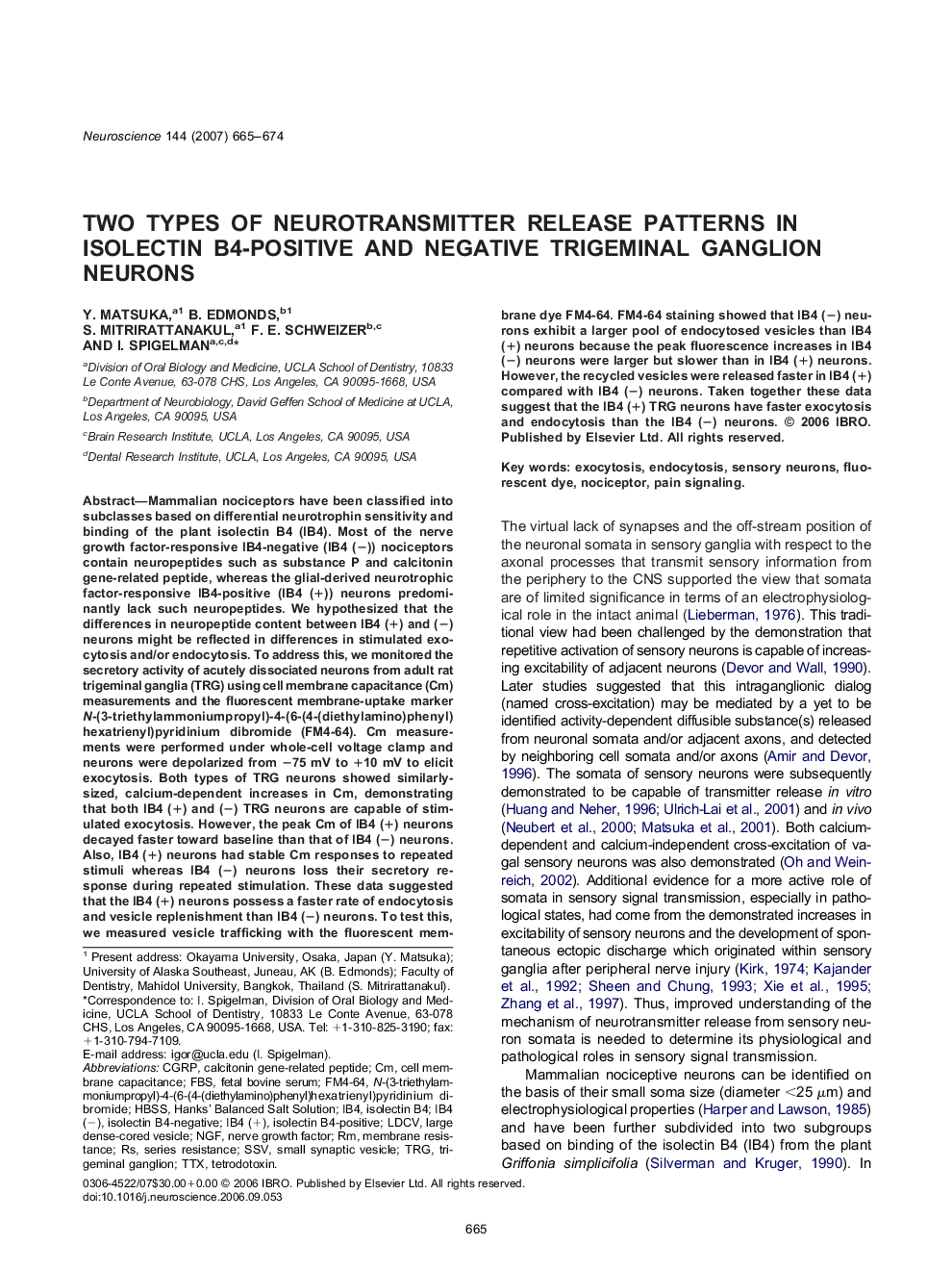| کد مقاله | کد نشریه | سال انتشار | مقاله انگلیسی | نسخه تمام متن |
|---|---|---|---|---|
| 4341126 | 1295824 | 2007 | 10 صفحه PDF | دانلود رایگان |
عنوان انگلیسی مقاله ISI
Two types of neurotransmitter release patterns in isolectin B4-positive and negative trigeminal ganglion neurons
دانلود مقاله + سفارش ترجمه
دانلود مقاله ISI انگلیسی
رایگان برای ایرانیان
کلمات کلیدی
IB4small synaptic vesicleFM4-64SSVTRGLDCVCGRPTTXFBSHBSSNGFEndocytosis - آندوسیتوز یا درون بریExocytosis - اگزوسیتوزisolectin B4 - ایزوکتین B4tetrodotoxin - تترو دوتوکسین Fluorescent dye - رنگ فلورسنتfetal bovine serum - سرم جنین گاوnerve growth factor - فاکتور رشد عصبHanks’ balanced salt solution - محلول نمک متعادل هانکسNociceptor - مسکنSeries resistance - مقاومت سریMembrane resistance - مقاومت غشاءSensory neurons - نورونهای حسیcalcitonin gene-related peptide - پپتید مرتبط با ژن کلسی تونینtrigeminal ganglion - گانگلیون سه گانه
موضوعات مرتبط
علوم زیستی و بیوفناوری
علم عصب شناسی
علوم اعصاب (عمومی)
پیش نمایش صفحه اول مقاله

چکیده انگلیسی
Mammalian nociceptors have been classified into subclasses based on differential neurotrophin sensitivity and binding of the plant isolectin B4 (IB4). Most of the nerve growth factor-responsive IB4-negative (IB4 (â)) nociceptors contain neuropeptides such as substance P and calcitonin gene-related peptide, whereas the glial-derived neurotrophic factor-responsive IB4-positive (IB4 (+)) neurons predominantly lack such neuropeptides. We hypothesized that the differences in neuropeptide content between IB4 (+) and (â) neurons might be reflected in differences in stimulated exocytosis and/or endocytosis. To address this, we monitored the secretory activity of acutely dissociated neurons from adult rat trigeminal ganglia (TRG) using cell membrane capacitance (Cm) measurements and the fluorescent membrane-uptake marker N-(3-triethylammoniumpropyl)-4-(6-(4-(diethylamino)phenyl)hexatrienyl)pyridinium dibromide (FM4-64). Cm measurements were performed under whole-cell voltage clamp and neurons were depolarized from â75 mV to +10 mV to elicit exocytosis. Both types of TRG neurons showed similarly-sized, calcium-dependent increases in Cm, demonstrating that both IB4 (+) and (â) TRG neurons are capable of stimulated exocytosis. However, the peak Cm of IB4 (+) neurons decayed faster toward baseline than that of IB4 (â) neurons. Also, IB4 (+) neurons had stable Cm responses to repeated stimuli whereas IB4 (â) neurons loss their secretory response during repeated stimulation. These data suggested that the IB4 (+) neurons possess a faster rate of endocytosis and vesicle replenishment than IB4 (â) neurons. To test this, we measured vesicle trafficking with the fluorescent membrane dye FM4-64. FM4-64 staining showed that IB4 (â) neurons exhibit a larger pool of endocytosed vesicles than IB4 (+) neurons because the peak fluorescence increases in IB4 (â) neurons were larger but slower than in IB4 (+) neurons. However, the recycled vesicles were released faster in IB4 (+) compared with IB4 (â) neurons. Taken together these data suggest that the IB4 (+) TRG neurons have faster exocytosis and endocytosis than the IB4 (â) neurons.
ناشر
Database: Elsevier - ScienceDirect (ساینس دایرکت)
Journal: Neuroscience - Volume 144, Issue 2, 19 January 2007, Pages 665-674
Journal: Neuroscience - Volume 144, Issue 2, 19 January 2007, Pages 665-674
نویسندگان
Y. Matsuka, B. Edmonds, S. Mitrirattanakul, F.E. Schweizer, I. Spigelman,